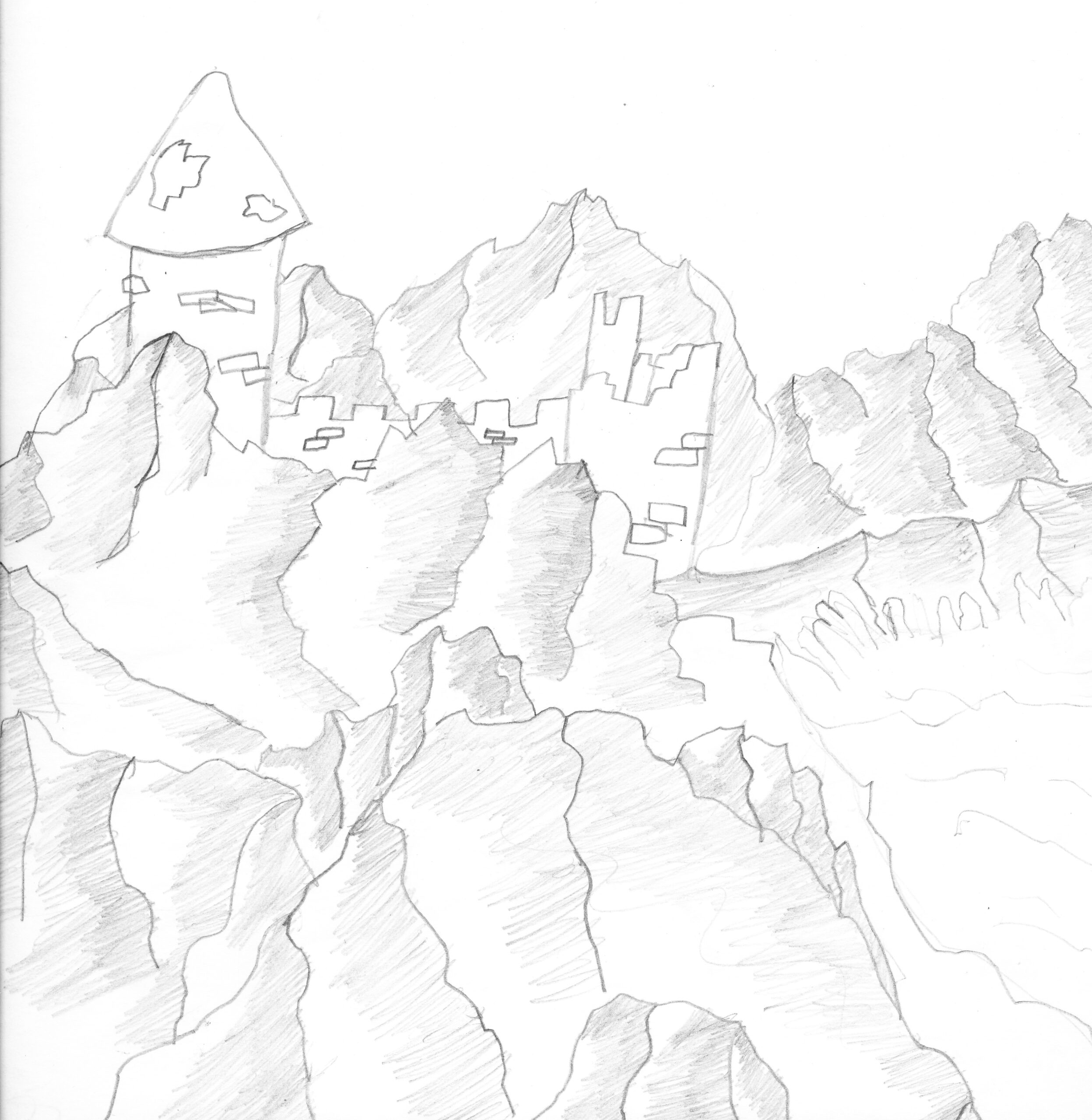Chapter 1 | MOUNTAINS
A mountain has been formed over millions of years and no two mountains are the same in shape. I will show you a basis with which you can invent or copy mountains yourself.
Exercise 1: Draw the outline/contour of a mountain a bit whimsical, especially not too tight. A trick is to draw with a ‘shaky hand’. The top does not necessarily have to be in the middle. You will see that the mountain soon starts to look rocky.
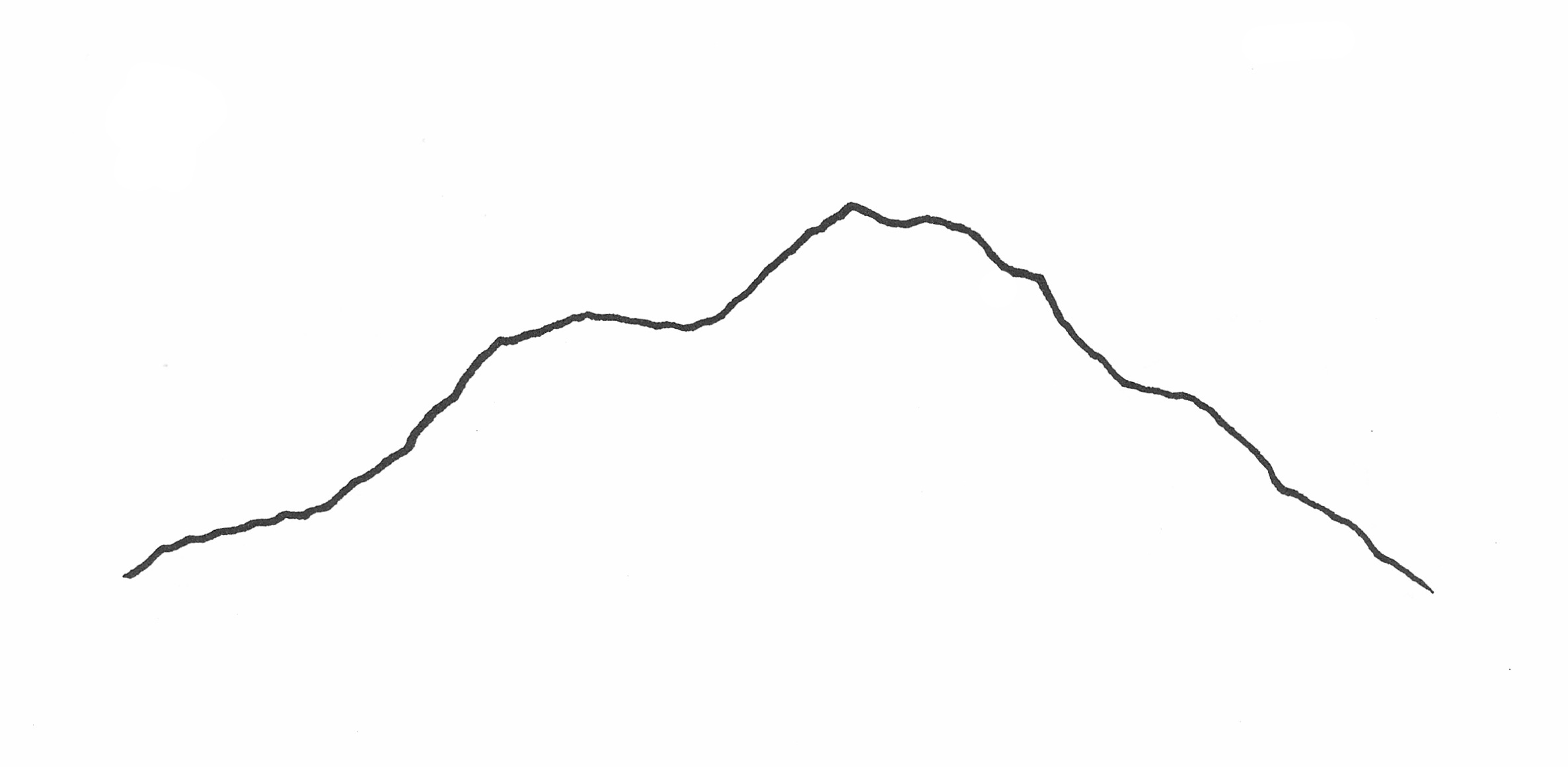
Exercise 2: To show that you can walk up to a mountain and climb it, draw squiggly lines from the top and other high points down. Draw shadows along the squiggly lines. In the example, this is done with hatching that follows the direction of the slopes.
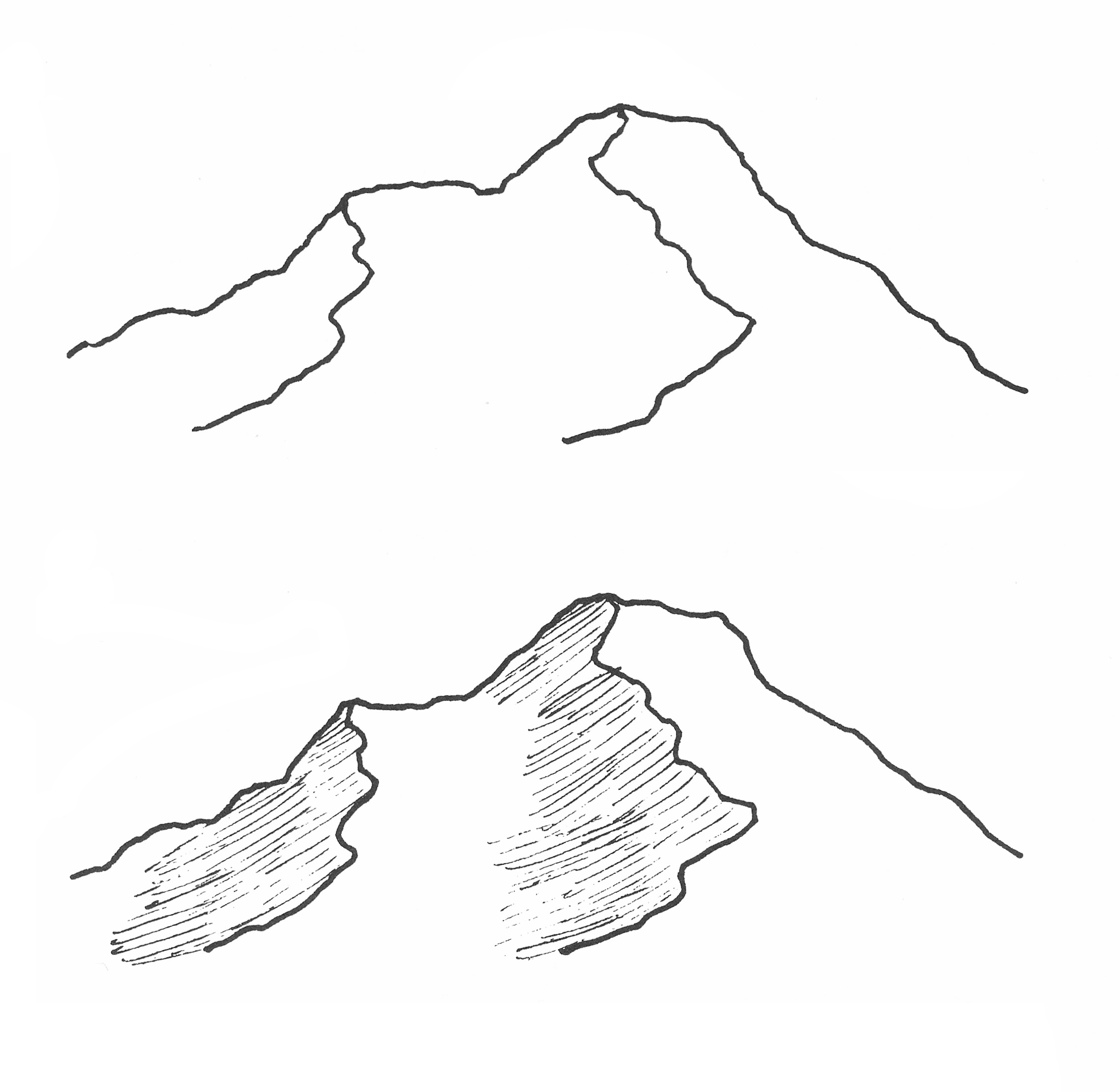
Exercise 3: Imagine your own mountain landscape. Start at the front with lower hills and behind them increasingly higher hills and mountains. You can draw shadows and/or give the mountains a color. To make the furthest mountains seem even further away, you can draw them a bit vaguely.
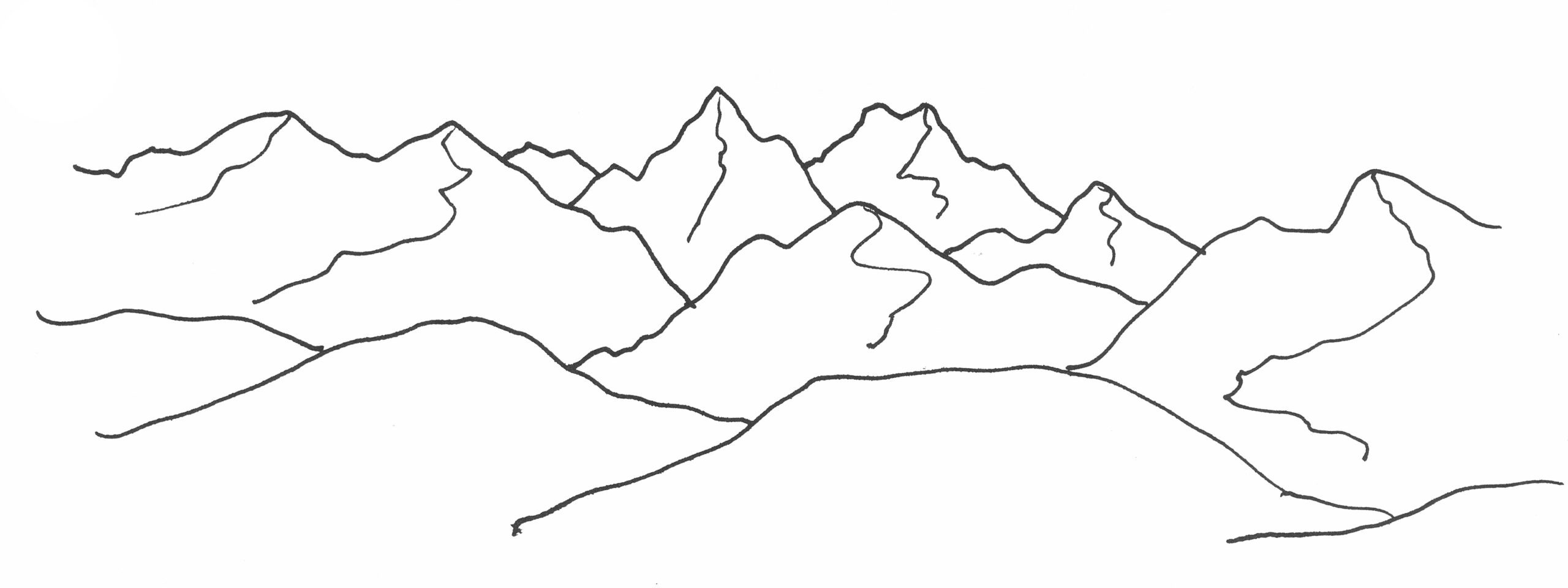
In reality, no two mountains are exactly the same. And the Dolomites in Italy are different from the mountains in the Swiss Alps or the Highlands in Scotland. If you see mountains again on a journey, you will probably notice the differences better.
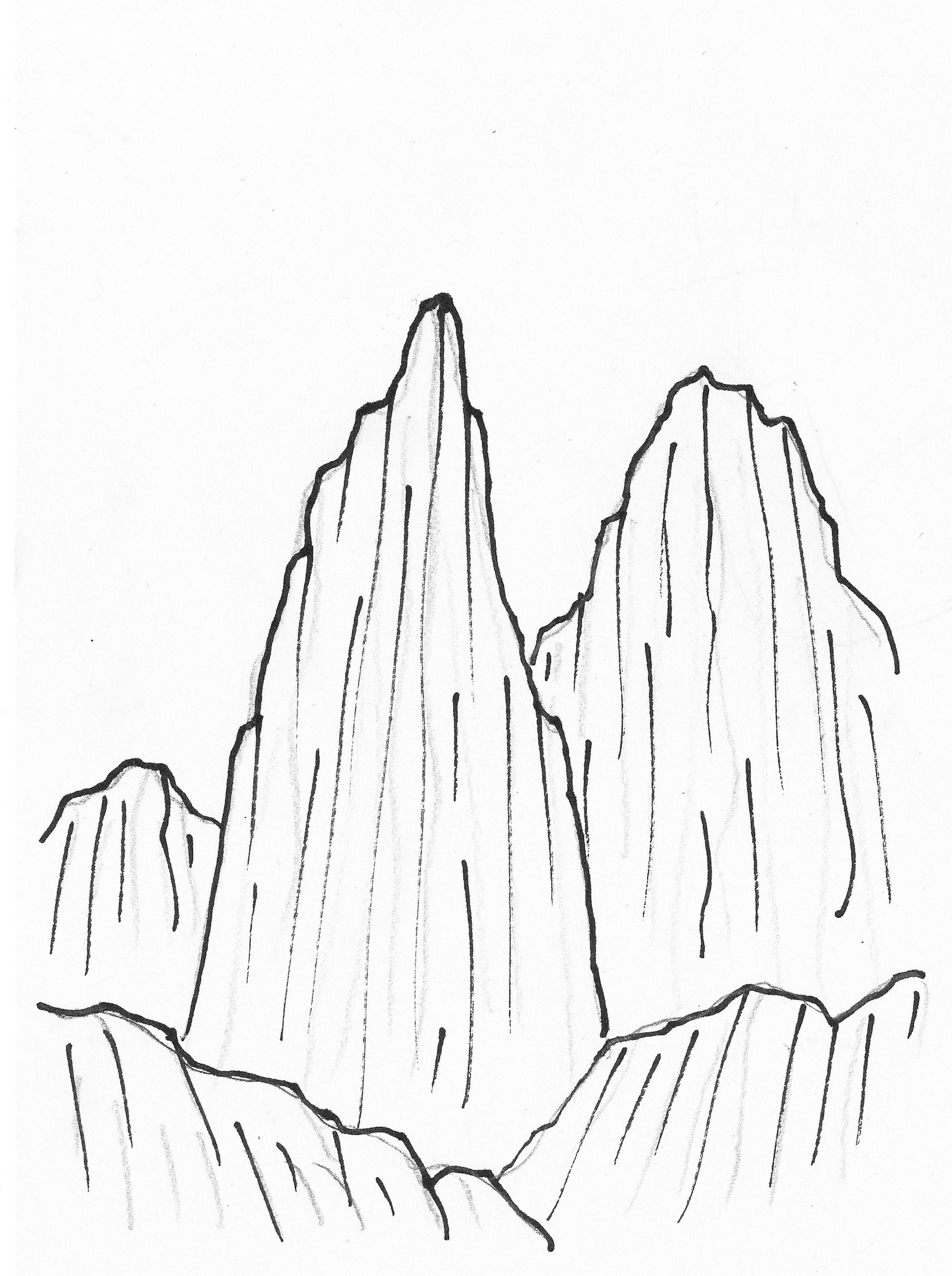
As a result of this lesson a student from group 8 has drawn an impressive mountain landscape. He/she thought it was nice to add the ruins of a castle as you sometimes see in old landscape paintings. Almost all of the hatching here runs diagonally from right to left, which suggests that the student is right-handed.
